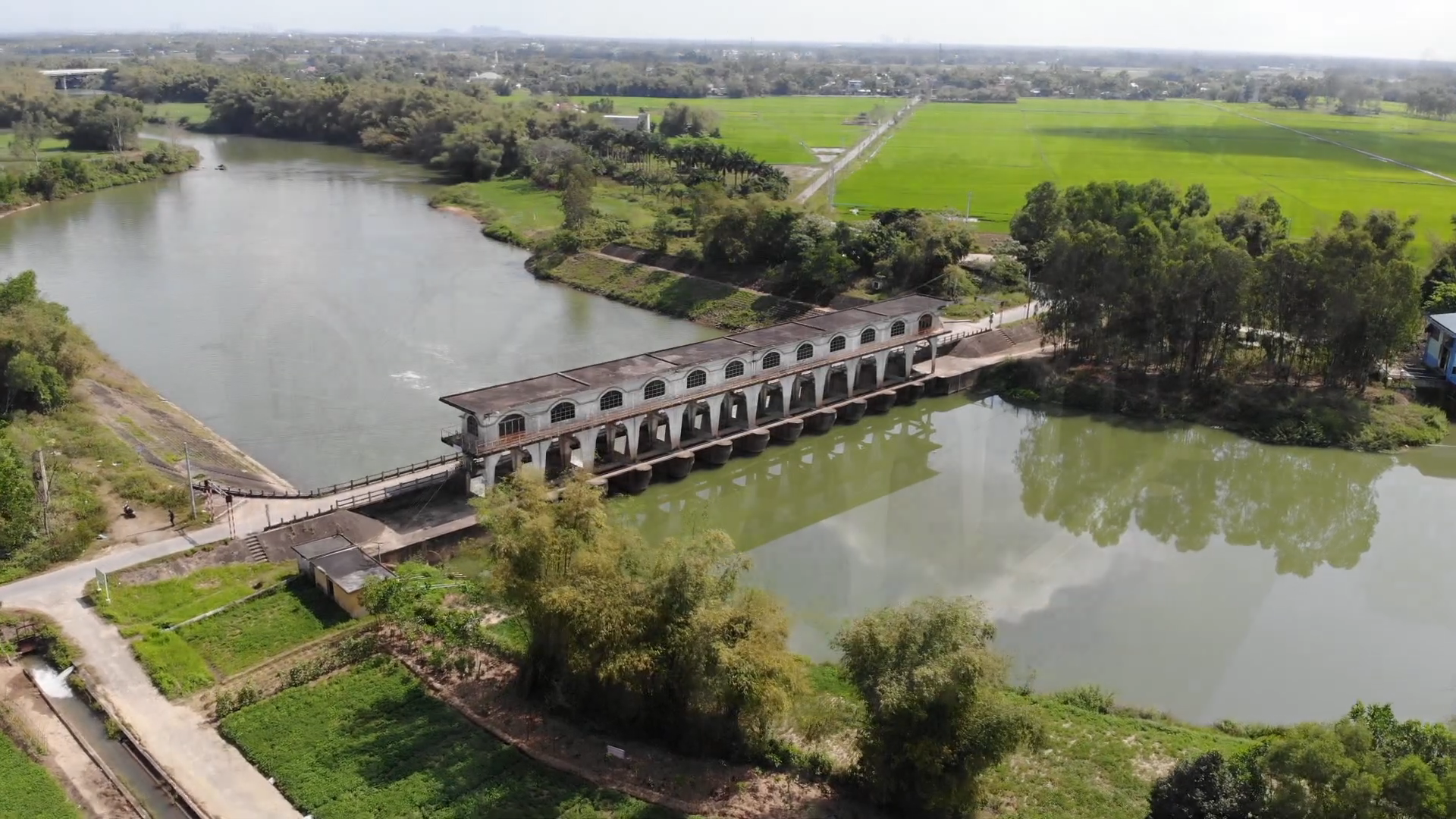 |
| The An Trach irrigation system is being proposed by Da Nang city and Quang Nam province to the central ministries and branches for priority investment in the period 2026-2030. Photo: HOANG HIEP |
Both regulating and creating large water reservoirs on rivers
According to the 2021-2030 Natural Disaster Prevention and Control and Irrigation Plan, with a vision to 2050, the An Trach, Thanh Quyt, Bau Nit, and Ha Thanh dams will be repaired, upgraded, supplemented, and newly built to ensure domestic water supply and irrigation water supply for 9,700 hectares of agricultural land. In addition, priority will be given to building a reservoir on the Con River (at the downstream dam of the Con River, a branch of the Vu Gia River) with a capacity of about 30 million m3 of water, to ensure domestic water supply and irrigation for about 1,500 hectares of agricultural land.
Along with that, investing in projects to overcome the lowering of river water levels, regulate water resources and regulate the Quang Hue River, in order to stabilize the water diversion ratio of the Vu Gia River to the Thu Bon River... According to Chairman of the Board of Directors of Da Nang Irrigation Exploitation Company Limited Nguyen Anh Tuan, the People's Committee of Da Nang City has assigned departments, branches and sectors to proactively work, coordinate and propose to central ministries and branches to pay attention to investing in the construction of projects to regulate water resources and regulate the Quang Hue River; upgrading the An Trach, Thanh Quyt, Bau Nit and Ha Thanh dam systems according to the above planning.
Director of the Vietnam Institute of Water Resources Tran Dinh Hoa said that the unit has been assigned to research and propose investment in the construction of a project to regulate water resources and regulate the Quang Hue River, including: regulating water, floods combined with traffic bridges. The proposed project has sluice compartments with wide-aperture gates and free spillways to both regulate water flow during the dry season and regulate floods.
“This project will solve two main objectives: proactively and flexibly control and adjust the water diversion ratio of Vu Gia River to Thu Bon River according to the requirements of Da Nang City and Quang Nam Province; both ensuring flood drainage capacity and preventing riverbank erosion. However, it is necessary to place this project within the system of irrigation works in the downstream of Vu Gia - Thu Bon River to improve the efficiency of water management and use.
Accordingly, it is necessary to improve the level of the water resource regulation and adjustment project of Quang Hue river combined with upgrading the An Trach irrigation system (An Trach, Ha Thanh, Bau Nit, Thanh Quyt dams), especially raising the spillway threshold of the dams from the current 2m to 3-3.5m. At that time, a reservoir will be created on the Yen, La Tho, Ai Nghia, Quang Hue rivers... with an additional water storage capacity of about 3-5 million m3 of water, to improve the ability to exploit, regulate, use water, ensure domestic water supply and irrigation for the downstream of Vu Gia river", Mr. Tran Dinh Hoa suggested.
Experts believe that the project to regulate water resources and regulate the Quang Hue River and upgrade the An Trach irrigation system (An Trach, Ha Thanh, Bau Nit, Thanh Quyt dams) should be prioritized for early construction to deploy solutions to coordinate the operation of inter-lakes, dams, projects... in the entire river basin in a reasonable manner, especially coordinating operations to reduce salinity for the Cam Le, Vinh Dien, Thu Bon rivers and effectively exploit water from the An Trach irrigation system. From there, evaluate the effectiveness, limitations and have a basis to propose the scale and contents related to investment in projects to prevent salinity, retain fresh water combined with flood drainage sluices and boat locks on the Thu Bon River.
Need to exploit Thu Bon River water resources sustainably
Quang Nam Provincial People's Committee has reviewed and proposed a list of new investment projects in the medium-term public investment plan for the period 2026-2030 of the central ministries and branches with an estimated capital demand from 2026-2029 for the project of regulating water resources and regulating the Quang Hue River of about 500 billion VND. At the same time, it proposed that the Central Government allocate 2,000 billion VND in the period 2026-2030 to build a reinforced concrete dam to prevent salinity and retain freshwater on the Thu Bon River (in Dien Ban town and Duy Xuyen district) including compartments with a system of opening and closing valves and locks, ensuring waterway traffic, and a traffic bridge connecting the two banks of the Thu Bon River.
According to the People's Committee of Quang Nam province, this project will prevent saltwater from Cua Dai from penetrating deep into the upper Thu Bon River; at the same time, it will maintain fresh water sources to serve the pumping stations upstream of the project to operate for irrigation, drought prevention for more than 6,000 hectares of agricultural land and ensure domestic water supply for about 100,000 households in the eastern area of Dien Ban town, Duy Xuyen district and communes and wards of Hoi An city as well as serve industrial production, improve the ecological environment of the Thu Bon River delta.
Some opinions mentioned that building a dam to prevent saltwater intrusion and retain fresh water on the Thu Bon River combined with a boat lock will help push the saltwater out of the Vinh Dien River without having to build a solid dam to block this river. At the same time, with the Vinh Dien River being dredged, the salinity of the Cam Le River (Da Nang) will be reduced, thereby reducing the salinity in the raw water intake area of the Cau Do Water Plant...
Chairman of the Board of Directors of Quang Nam Irrigation Exploitation Company Limited Nguyen Dinh Hai said that once the dam to prevent saltwater intrusion on Thu Bon River is built, it is not necessary to build a solid dam to block Vinh Dien River. Former Deputy Director of the Department of Agriculture and Rural Development (now the Department of Agriculture and Environment) of Da Nang City Huynh Van Thang said that the agricultural production area in the irrigation area of Vinh Dien River is being urbanized and will be strongly urbanized in the near future.
In the future, the above area will become residential areas, urban areas, industrial zones..., so the irrigation water source will be greatly reduced. In addition, with the strong trend of saline intrusion in recent years, when saltwater intrudes to Cam Dong arch, even if a dam is built to block Vinh Dien river, this river will still be contaminated with salt. Therefore, in the short term, the locality can maintain the temporary dam to block Vinh Dien river. In the long term, Da Nang and Quang Nam need to switch to the solution of exploiting water from Thu Bon river.
“Da Nang needs to soon build a pumping station in the upstream area of Giao Thuy Bridge along with a pipeline system to collect and transmit fresh water from the Thu Bon River to the city. Quang Nam province also needs to study the exploitation of Thu Bon River water to supply Hoi An city and Dien Ban town, without having to build a solid dam to block Vinh Dien River to ensure the important waterway on this river,” Mr. Huynh Van Thang suggested. Deputy Director of the Department of Agriculture and Environment of Quang Nam province Truong Xuan Ty also said that it is necessary to consider the construction of a saltwater prevention project on the Thu Bon River as the optimal solution to ensure water supply for Da Nang city and Quang Nam province.
In addition to ensuring fresh water resources, the proposed investment in a saltwater dam combined with a boat lock on the Thu Bon River will promote the development of river tourism. At the same time, reopening the waterway on the Vinh Dien River will create favorable conditions for the formation of a cultural tourism route by river. Da Nang City and Quang Nam Province are urgently dredging and clearing the Co Co River, promising to complete the cultural tourism tour by river from Hoi An to Da Nang and vice versa through the Co Co, Han, Vinh Dien, and Thu Bon rivers, helping to develop cultural tourism and contribute to promoting socio-economic development.
HOANG HIEP
Source: https://baodanang.vn/kinhte/202504/dau-tu-cac-cong-trinh-thuy-hien-dai-da-muc-tieu-bai-2-dau-tu-cong-trinh-da-muc-tieu-khoi-thong-tuyen-giao-thong-thuy-4004761/






![[Photo] Prime Minister Pham Minh Chinh chairs conference on anti-smuggling, trade fraud, and counterfeit goods](https://vphoto.vietnam.vn/thumb/1200x675/vietnam/resource/IMAGE/2025/5/14/6cd67667e99e4248b7d4f587fd21e37c)

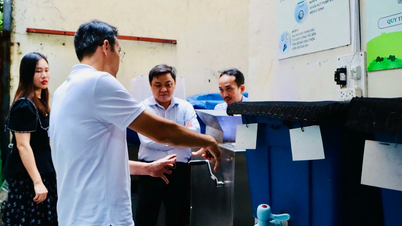
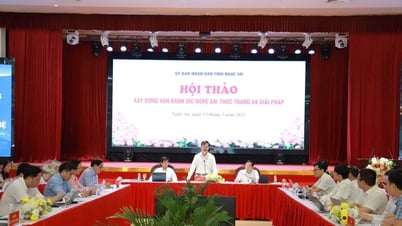
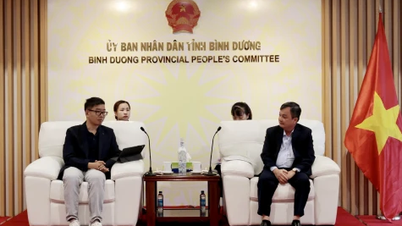
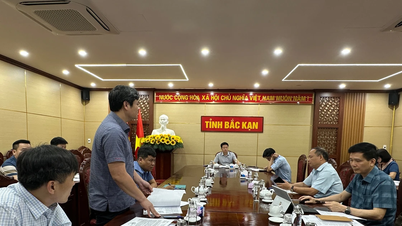
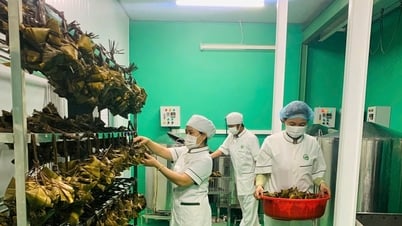






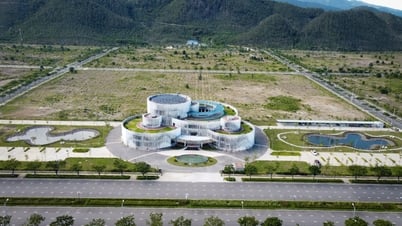
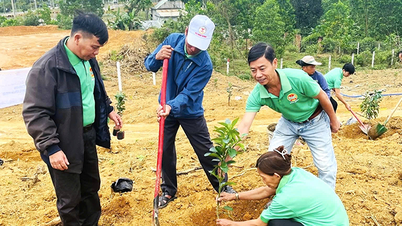
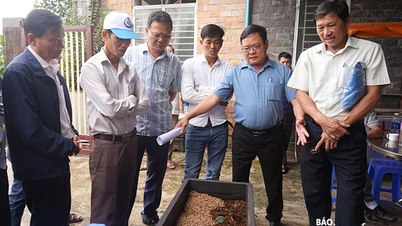
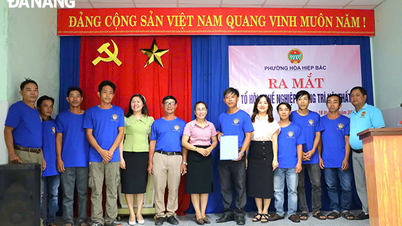
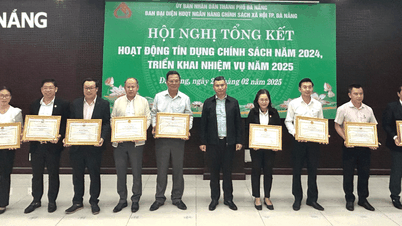











































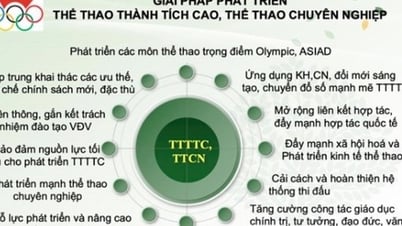



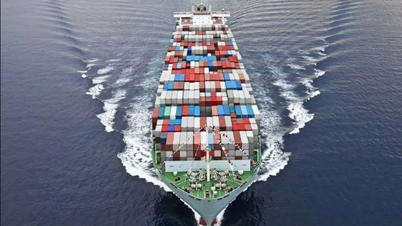
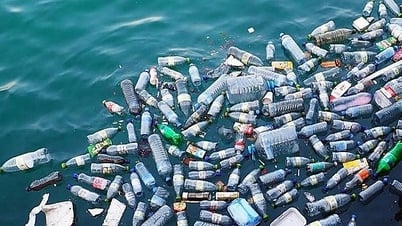
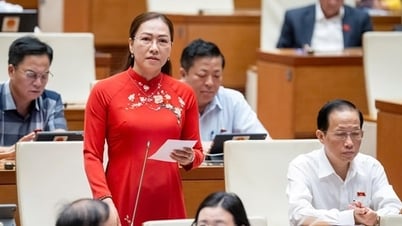














Comment (0)